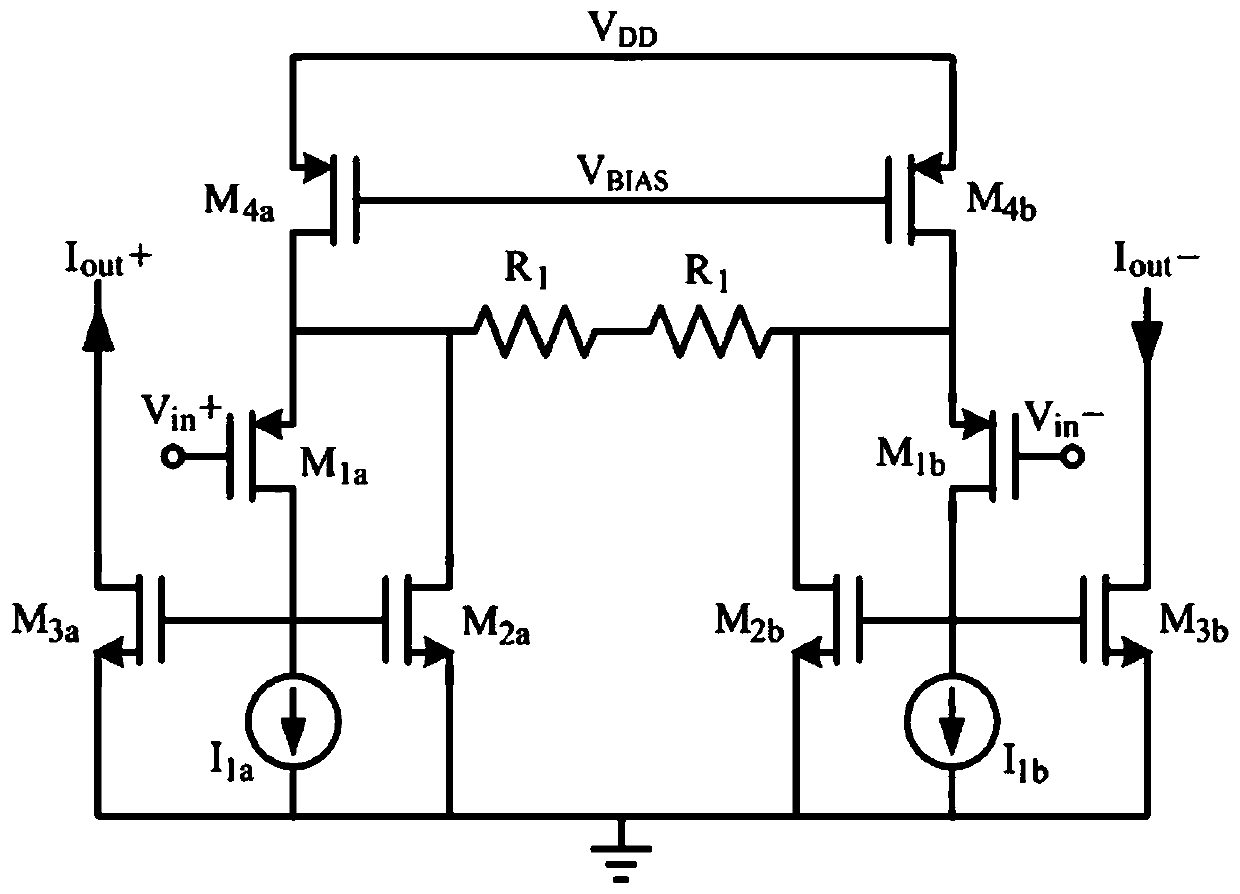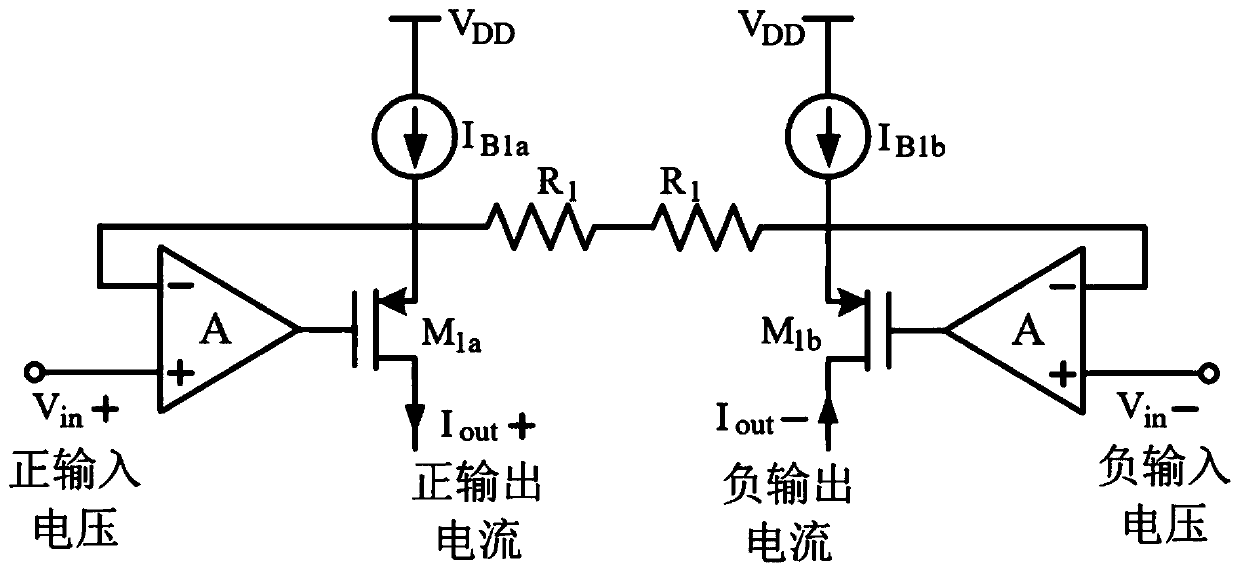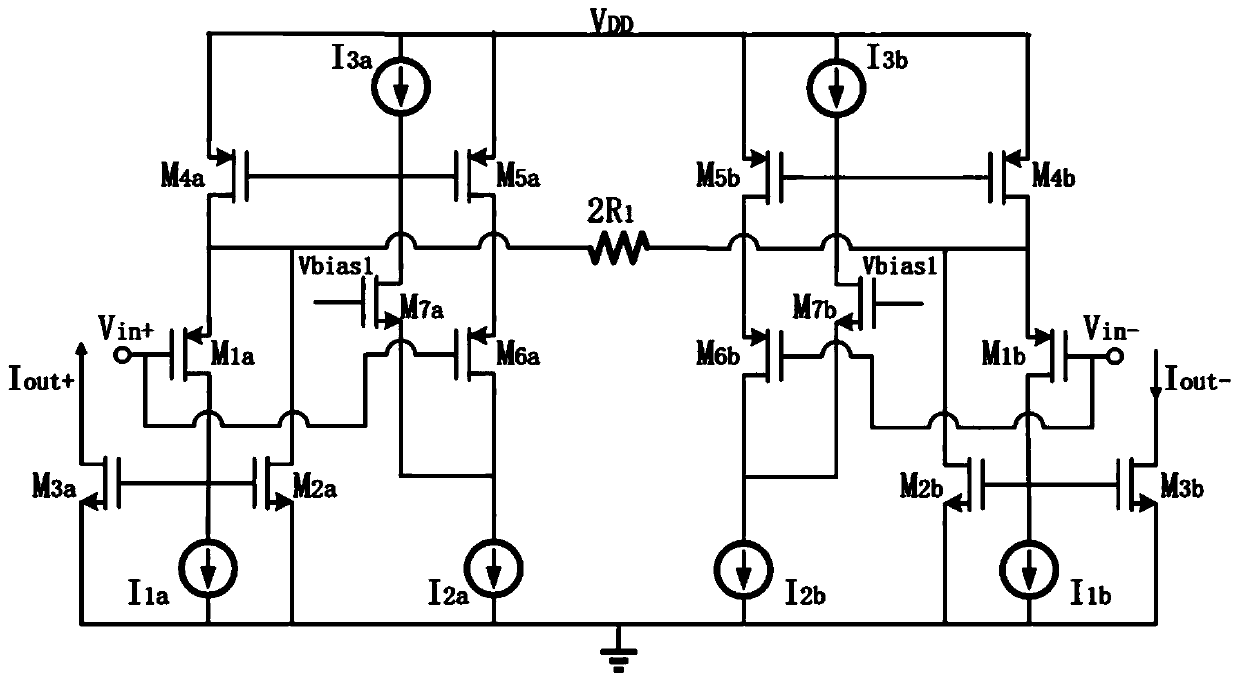CMOS transconductance unit circuit based on self-adaptive bias
A technology of adaptive bias and transconductance unit, applied in electrical components, DC-coupled DC amplifiers, amplifiers with semiconductor devices/discharge tubes, etc., can solve the problem of output impedance reduction, small input voltage space, and common-mode input The voltage can not be reached and other problems, to achieve the effect of improving linearity, small dependence, and stable bias current
- Summary
- Abstract
- Description
- Claims
- Application Information
AI Technical Summary
Problems solved by technology
Method used
Image
Examples
Embodiment
[0023] Example: refer to image 3 As shown, a CMOS transconductance unit circuit based on adaptive bias includes a transconductance unit main circuit and an adaptive bias current source; the transconductance unit main circuit includes a PMOS transistor M1a, a PMOS transistor M2a, and a PMOS transistor M3a , PMOS transistor M1b, PMOS transistor M2b, PMOS transistor M3b, resistor 2R1, current source I1a and current source I1b; the adaptive bias current source includes PMOS transistor M4a, PMOS transistor M5a matching PMOS transistor M4a, and PMOS transistor M6a , PMOS transistor M7a, PMOS transistor M4b, PMOS transistor M5b matching PMOS transistor M4b, PMOS transistor M6b, PMOS transistor M7b, current source I2a, current source I3a, current source I2b and current source I3b, wherein PMOS transistor M1a and PMOS transistor M1b is mirror-symmetrical, PMOS transistor M2a is mirror-symmetrical to PMOS transistor M2b, PMOS transistor M3a is mirror-symmetrical to PMOS transistor M3b,...
PUM
 Login to View More
Login to View More Abstract
Description
Claims
Application Information
 Login to View More
Login to View More - R&D
- Intellectual Property
- Life Sciences
- Materials
- Tech Scout
- Unparalleled Data Quality
- Higher Quality Content
- 60% Fewer Hallucinations
Browse by: Latest US Patents, China's latest patents, Technical Efficacy Thesaurus, Application Domain, Technology Topic, Popular Technical Reports.
© 2025 PatSnap. All rights reserved.Legal|Privacy policy|Modern Slavery Act Transparency Statement|Sitemap|About US| Contact US: help@patsnap.com



